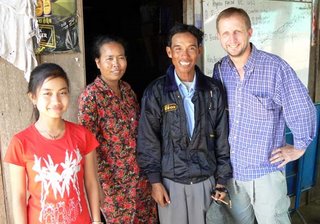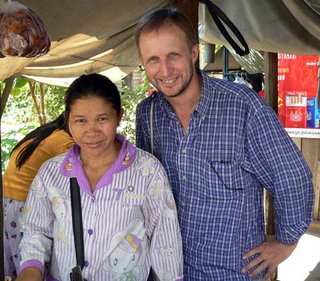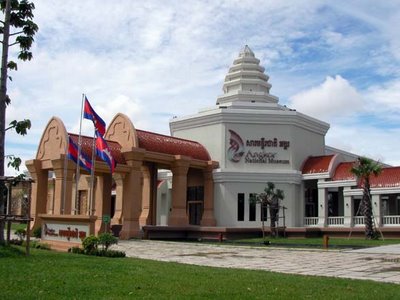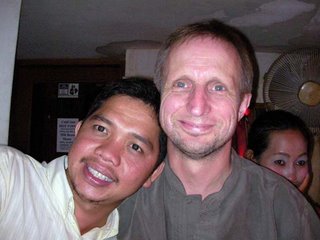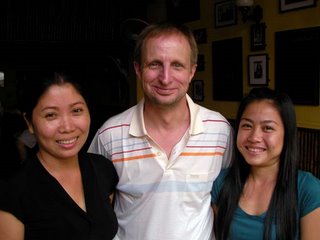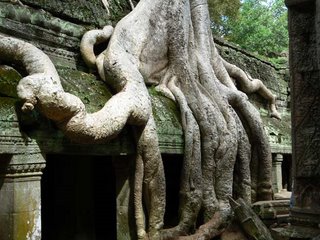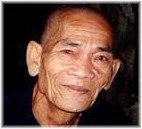Continuing the theme of Cambodian art, two new collections in Chicago are currently on show.
Khmer Here - by Deanna Isaacs, Chicago Reader (Chicago, Illinois, USA)
Ty Tim was a high school teacher in Cambodia in 1975 when the Khmer Rouge took over. The country, which had suffered years of strife during the Vietnam war and massive U.S. bombing in its wake, now fell victim to Pol Pot’s efforts to transform it into a land of peasant farmers. The plan called for the eradication of religion, culture, and history, and it was brutally enforced. The calendar was reset to year zero, temples were destroyed, educated city dwellers were declared the enemy. Capital city Phnom Penh was emptied—“turned into a ghost town,” Tim says. He and his family were among the thousands forced to trek through the jungle to labor camps, where they were subjected to inhumane conditions and fed a starvation diet. During the three years and eight months of the Khmer Rouge regime, about 1.7 million Cambodians—more than 20 percent of the population—died. Tim and his wife lost four children, as well as his parents and two brothers.When Vietnam invaded Cambodia in 1979, the Khmer Rouge enforcers abandoned the camps and the workers dispersed. Tim, his wife, and a daughter eventually made their way to Thailand. In 1982, with the help of a sponsor in Mokena, they came to Illinois. Tim, who’d specialized in Khmer (Cambodian) literature, culture, and philosophy, found work as a bilingual teacher, and he and his wife had three more daughters.
Retired from full-time teaching, Tim now works as the archivist at the Cambodian American Heritage Museum, which opened in 2004 as a project of the Cambodian Association of Illinois. Started by a few refugee families in the western suburbs 31 years ago, the association has been located in Chicago since 1980, providing resettlement help and basic social services to Cambodian immigrants. In 1999 it purchased and moved into an old building with an empty lot next door. It also began a capital campaign, not only to add office space but to build a dream: a museum that would tell Cambodians’ story, honor their dead, and display their culture. It would be for the public but also for the elders forced to leave everything behind and for their American children, making their way in a very different society. The golden age of Khmer culture lasted from the 9th century through the 13th century, when the Angkor empire included all of current Cambodia and extended into what are now Thailand, Laos, and Vietnam. An agricultural and artistic society rooted in the cycles of the Mekong River, it was characterized by tall, elaborately decorated stone and brick temples (or wats) and temple cities. The most impressive of them was the fabulous 500-acre Angkor Wat, built in the 12th century and dedicated to the Hindu god Vishnu. The arts of the period included ritual music and dance and the masterful stone bas-reliefs and sculptures still visible in the temples. After raising $1.3 million, the Cambodian Association added a handsome 4,000-square-foot museum to its building three years ago. It opened with a permanent Killing Fields memorial and a text-and-photo exhibit that explained what had happened to Khmer Rouge survivors, but it had no collection of its own—none of the ancient artifacts.
A member of the museum board, Northern Illinois University anthropologist Judy Ledgerwood, suggested that the museum and the university might partner on a grant proposal. NIU is home to a center for Southeast Asia studies, started in 1963 to train Peace Corps volunteers, and the university was looking to mount an exhibit on Cambodia’s current economic and cultural recovery. Ledgerwood’s research has been focused on that part of the world, and in the past she’d received funding from the Henry J. Luce Foundation, which she says has a history of supporting projects on Southeast Asia and an interest in helping young institutions. They submitted a proposal with three components: an exhibit for NIU, a collection of art and artifacts and staff training for the museum, and an oral history. The Luce foundation gave them $116,000, and in June 2006 Tim set off with NIU’s anthropology museum director, Ann Wright-Parsons, on a buying trip to his homeland—only his second visit since he and his family had fled. Even with the money, however, Tim wouldn’t be acquiring any ancient treasures: Cambodian law now prohibits taking them out of the country. He’d be shopping for reproductions. Tim says that, with the $6,000 he had to spend, he was determined to find the items most deeply connected to the Cambodian spirit. “Before the infiltration of the Indian religion,” he says, “we had our own culture. We worshipped the parents—the living god as the mother and father, mother as earth and leader, father as water and protector.” If Cambodians lose their reverence for these traditional things, he says, “we lose our identity.” The core pieces of the 16-item collection he brought back—which includes finely hewn musical instruments, a pair of dazzling costumes, and a 12th-century caravan in bas-relief—are a large, flawlessly crafted wood carving representing the mother and two banners like waterfalls representing the father.
Both the NIU exhibit and the museum show opened within the last few weeks; in the spring they’ll change places for six months or so. (The project’s final component, the Killing Fields oral history, is scheduled for completion by 2009.) Ledgerwood says both exhibits are about Cambodia’s recovery under what is still a relatively authoritarian government: the rebuilding of temples, the resurgence of arts and crafts, and the emergence of an economy that, besides rice growing, includes the mass manufacture of clothing and a booming tourist business. Museum chairman Leon Lim, another Killing Fields survivor, says the gleaming new collection is a way for people who lost their homeland, families, belongings, and culture to claim their identity and celebrate the lives they’ve found in Chicago. Meanwhile, back in Cambodia, recovery aside, the wheels of justice barely turn: Pol Pot’s second-in-command was arrested only last month; no other Khmer Rouge officials have ever been brought to trial. Khmer Spirit : Arts & Culture of Cambodia will show through til June 2008 at Cambodian American Heritage Museum. Cambodia Born Anew will be on display at the Anthropology Museum, Northern Illinois University through til May 2008.
 I’m here at last. I’ve landed in Phnom Penh to begin a new chapter in my life. I’ve been here many times before of course, but this time it’s for keeps. I have a new job, I have a place to stay, and I have a new beginning as an expat in this bustling and vibrant city some 6,300 miles away from my former home. I am excited and apprehensive in similar measures, it’s a country I know well and love to bits, but I’m out of my comfort zone and that brings with it a certain degree of nervousness. But one thing I have in abundance is that I am in a country where I’m surrounded by friends. They’re what made me decide to venture out here for this brand new start in my life, they have sustained me on my thirteen previous trips to this beautiful country and I’m sure they will be my rock for my first few months of life here in Phnom Penh. Stay tuned for further developments and for a look inside my new Phnom Penh life.
I’m here at last. I’ve landed in Phnom Penh to begin a new chapter in my life. I’ve been here many times before of course, but this time it’s for keeps. I have a new job, I have a place to stay, and I have a new beginning as an expat in this bustling and vibrant city some 6,300 miles away from my former home. I am excited and apprehensive in similar measures, it’s a country I know well and love to bits, but I’m out of my comfort zone and that brings with it a certain degree of nervousness. But one thing I have in abundance is that I am in a country where I’m surrounded by friends. They’re what made me decide to venture out here for this brand new start in my life, they have sustained me on my thirteen previous trips to this beautiful country and I’m sure they will be my rock for my first few months of life here in Phnom Penh. Stay tuned for further developments and for a look inside my new Phnom Penh life. 


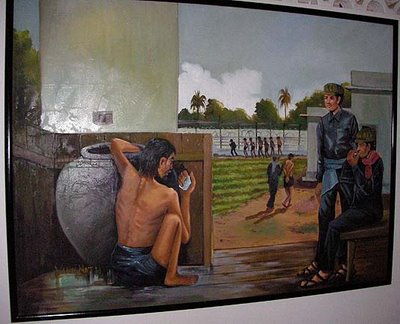


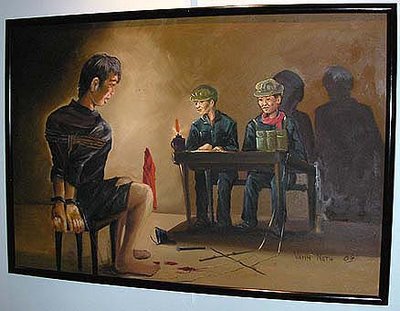
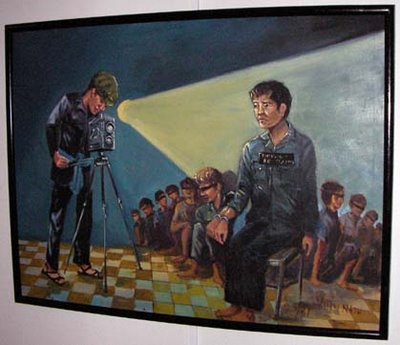
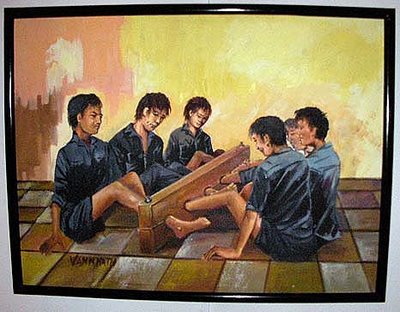
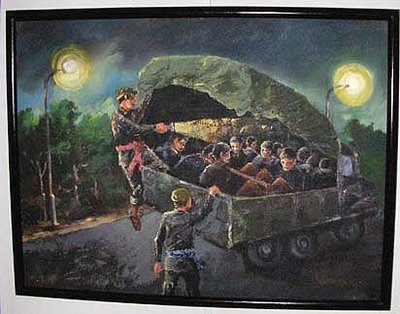

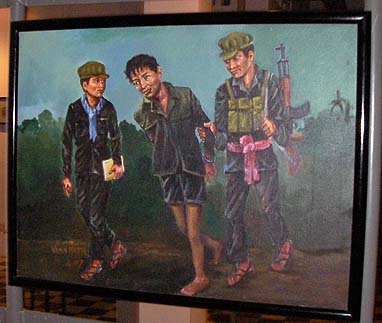
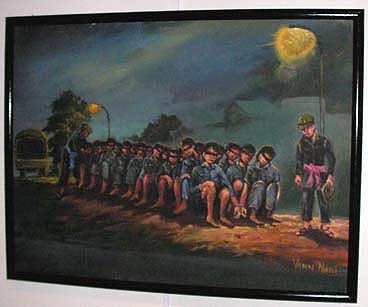
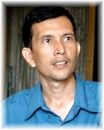



 Opening nationwide in the US on 9 November is Guy Jacobson's critically-acclaimed film Holly. Shot on location in Cambodia, including many scenes in actual brothels in the notorious red light district of Phnom Penh, Holly is a captivating, touching and emotional drama. Patrick (Ron Livingston), an American card shark and dealer of stolen artifacts, has been 'comfortably numb' in Cambodia for years, when he encounters Holly (Thuy Nguyen), a 12-year-old Vietnamese girl, in the K11 red light village. The girl has been sold by her impoverished family and smuggled across the border to work as a prostitute. Holly's virginity makes her a lucrative prize, and when she is sold to a child trafficker, Patrick embarks on a frantic search through both the beautiful and sordid faces of the country, in an attempt to bring her to safety.
Opening nationwide in the US on 9 November is Guy Jacobson's critically-acclaimed film Holly. Shot on location in Cambodia, including many scenes in actual brothels in the notorious red light district of Phnom Penh, Holly is a captivating, touching and emotional drama. Patrick (Ron Livingston), an American card shark and dealer of stolen artifacts, has been 'comfortably numb' in Cambodia for years, when he encounters Holly (Thuy Nguyen), a 12-year-old Vietnamese girl, in the K11 red light village. The girl has been sold by her impoverished family and smuggled across the border to work as a prostitute. Holly's virginity makes her a lucrative prize, and when she is sold to a child trafficker, Patrick embarks on a frantic search through both the beautiful and sordid faces of the country, in an attempt to bring her to safety.




